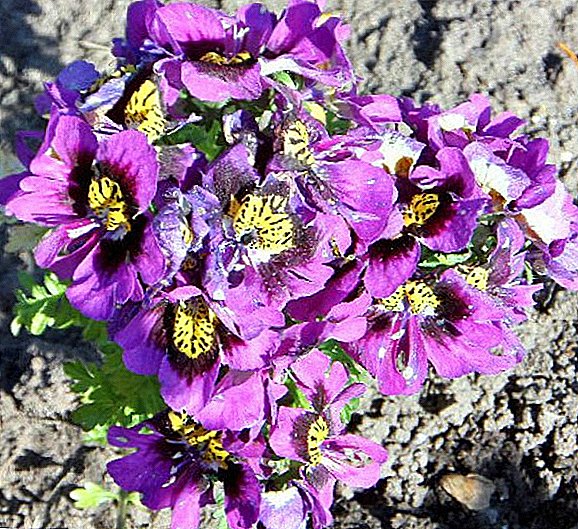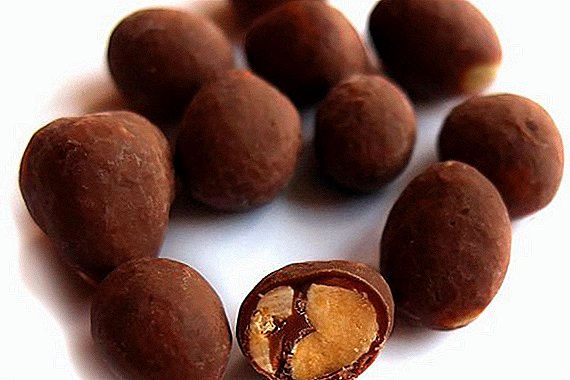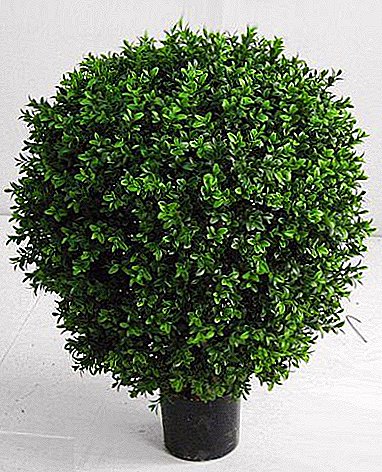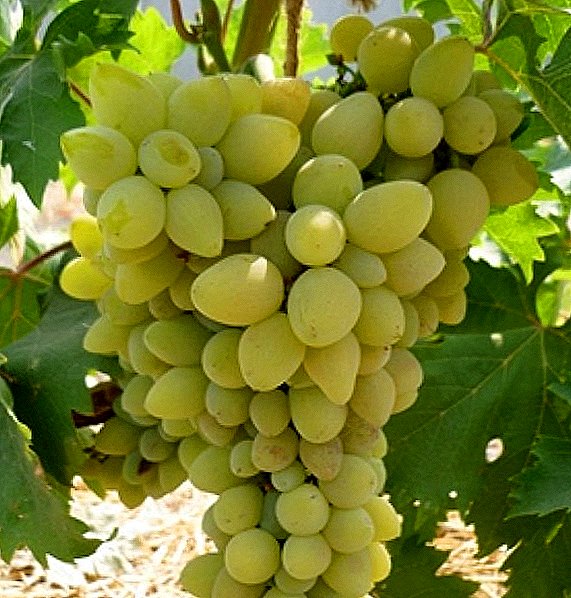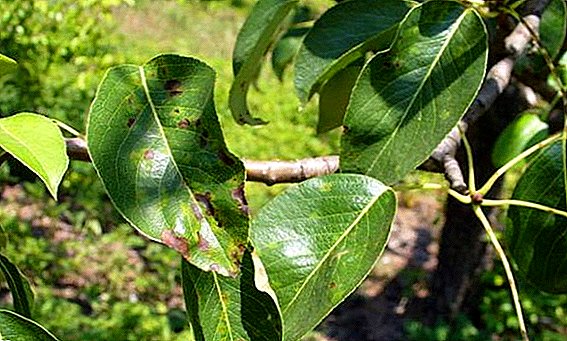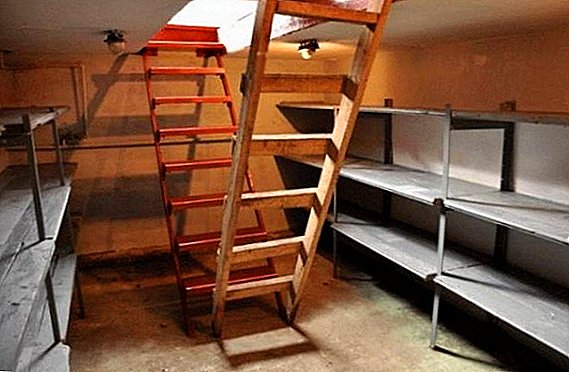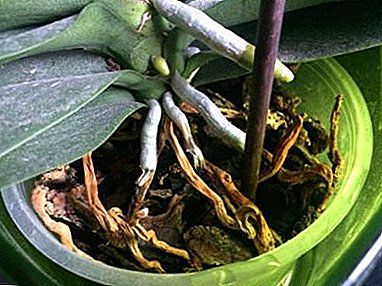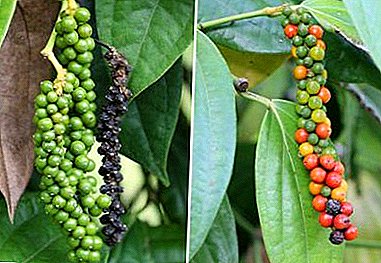
Surprisingly, the beloved black pepper, brought to us from overseas countries, can easily be grown on its own window sill.
Even with minimal care, the plant not only pleases the grower with a rich harvest, but also decorates the house with succulent green foliage on long climbing leaves.
What do we know about favorite seasoning
Where does black pepper grow?
In ancient times, this area was called Malihabar, which translates as "land of pepper." By place of origin, the plant has acquired another name - "Malabar berry".
In the wild, black pepper grows in forests, twining tall trees 15-meter shoots. In areas with hot and humid tropical climates, such as Sri Lanka, Brazil, Indonesia, China, Cambodia and other countries, the plant is grown as a crop. The main supplier of black pepper is the island of Sumatra.
 As a rule, on the plantations, the growth of the “Malabar berry” is limited, allowing its shoots to stretch only up to 5 meters in length.
As a rule, on the plantations, the growth of the “Malabar berry” is limited, allowing its shoots to stretch only up to 5 meters in length.
Support for the plant are special poles. Juicy gray-green leaves of black pepper have an ovoid shape with a ribbed surface and a pointed tip.
The size of the leaves rather large - from 6 to 10 cm in length. The liana blossoms in small white or gray-yellow flowers, gathered in thin hanging ears.
After the plant ottsvetet, small fruits in the form of spherical stone stones with a burning taste are formed on it. The berries are green first, then they turn yellow, and then, when fully ripe, they turn orange-red.
For black pepper as a seasoning, the berries are picked unripe when they are green or are just starting to turn yellow. The harvested harvest scald with boiling water and laid out to dry in the sun. When it dries, the fruits shrivel up and then turn black, turning into a world-famous seasoning.
ATTENTION! Fruiting pepper vine starts on the second year of life. It blooms in the middle of spring. The fruits ripen non-simultaneously, so the harvest takes several months.
One plant gives about 3 kg of seasoning. The lifetime of this representative flora - from 25 to 50 years.
Grow black pepper can be at home. With proper care, a remarkable plant is able every year to provide a grower with an abundant harvest of burning peas. Moreover, the seeds for its cultivation will be found in every hostess.
Growing from seed
Consider how to grow black pepper from seeds at home.
 The best time for sowing "Malabar berry" - beginning or middle of June. Seed material in the form of black peppercorns in a bag can be found in the kitchen cabinet or any deli.
The best time for sowing "Malabar berry" - beginning or middle of June. Seed material in the form of black peppercorns in a bag can be found in the kitchen cabinet or any deli.
For sowing, the largest peas are selected and soaked in warm water for one day. Sow seeds should be at a depth of no more than 1 cm. The recommended soil for sowing is a mixture, for which take 1 share of river sand and sod land and 2 shares of leafy land.
It is advisable to cover the container with the planted seeds with plastic wrap or glass, not forgetting to periodically ventilate it and moisten the ground. At a temperature from 25 to 30 ° C germination can be expected in a month.
When the plant grows stronger and grows up, you can transplant them into separate pots with a diameter of not more than 7 cm. As the root system grows, each young vine will need a container with a diameter of about 9 cm and a reliable support.
Visually familiarize yourself with how peppercorns grow in the photo below:



Peculiarities of keeping at home
Further care for pepper vine does not make much effort. With sufficient humidity, it grows very quickly and is able to stretch within a year. up to 2 meters. You just need to pay attention to the plant and follow some recommendations for growing it.
Lighting and temperature
Pepper needs scattered sunlight. An ideal place to place it is a window looking west or east. In the south you will need shading from the sun. Due to the perceived lack of light, the northern side will not fit at all.
The optimal temperature in the warm season - from 20 to 25 ° C, and in winter - from 16 to 18 ° C. It is very desirable that the temperature bar in the room does not fall below 10 ° C, otherwise the pet may die.
Watering and moisture
 During the warm period, the plant should be watered sufficiently abundantly, waiting for the top layer of the earth to dry out. In the autumn, it is recommended to reduce watering, and in winter, moisture should be very moderate.
During the warm period, the plant should be watered sufficiently abundantly, waiting for the top layer of the earth to dry out. In the autumn, it is recommended to reduce watering, and in winter, moisture should be very moderate.
And it is important to remember that overdrying and over-wetting are equally dangerous for black pepper. For the inhabitants of the tropics high humidity is the main condition for existence.
If the indoor air is dry, the plant will begin to languish and ache. Morning and evening water treatments in the form of spraying the foliage will help to increase the humidity.
Top dressing
In the spring and end of August, the pet should be fertilized twice a month with a mineral complex for decorative and hardwood. In winter, pepper does not need fertilizers.
Transfer
Young vines are transplanted annually, adults - every two years. Transplantation is carried out in the spring, it requires a slightly larger pot, provided with holes for water flow and a sufficient drainage layer. It is better to prepare the substrate for the plant by yourself, taking equal shares of river sand, peat, humus, leaf and sod land for this.
Pruning
ATTENTION! As with all plants, pepper requires annual pruning and removal of old or sick parts. In autumn, when the fruiting period ends, it is necessary to cut the shoots by a third.
In addition, due to the very rapid growth of the vine can acquire too long and tangled lashes - it is desirable to shorten them, so that the plant looked better and was healthy. Black pepper will acquire a particularly attractive shape, if there is a support in the form of a wooden lattice or an arc next to it - young shoots will effectively entwine it.
Breeding
- Seeds that can be collected from the plant itself. Sowing the seeds and taking care of the seedlings follows the method described above.
- Cuttings. With an adult, creepers are cut into cuttings with 1 or 2 buds and planted in soil consisting of one part of leafy ground and 2 parts of sand. The container with the cuttings is covered with a plastic bag, the “greenhouse” is regularly aired and the seedlings are watered. At a temperature of 24 to 26 ° C, rooting occurs within 3 weeks. After that, young black peppers can be seated in separate pots.
- The division of the bush. This method is best used during spring transplantation. Sprouted climbing bush plants are separated, and the resulting "delenki" are seated in separate containers, providing them with proper care.
- Layering. Long creeping shoots of vines attached to the surface of the soil and moisten it regularly. Rooting in this case happens very quickly. Escape together with the roots cut off and allocate him a separate container.
Possible problems
- Leaves wither and turn yellow - waterlogging of the soil, lack of useful substances.
- The tips of the leaves grow brown and brown - low air humidity, "drought" in the pot.
- Stems are stretched and laid bare - poor lighting, the need for feeding.
Benefit and harm
Consider the beneficial and harmful properties of seasoning, as well as diseases that can be treated with black pepper in traditional medicine.
 Black pepper is so versatile that it is part of most recipes for the first and second courses. The popularity of seasoning is not accidental, because it has a lot of useful properties. "Malabar berry" has a very rich composition.
Black pepper is so versatile that it is part of most recipes for the first and second courses. The popularity of seasoning is not accidental, because it has a lot of useful properties. "Malabar berry" has a very rich composition.
It contains vitamins A, E, C and K and almost the entire group B, as well as essential oils, glycosides, all kinds of macro-and microelements. Hotness seasoning attached capsaicin.
This unique substance promotes the stimulation of appetite, diluting the blood, prevents blood clots, stimulates metabolism. Also pepper vine helps to normalize the bowels and is indicated for stress, fatigue and depression.
IMPORTANT! Black pepper has long been used for medicinal purposes. It has antioxidant, bactericidal, firming and even anthelmintic action. The Malabar Berry helps in the treatment of fever, cough and cold and in case of endocrine diseases.
However, black pepper has a number of contraindications. It is not recommended for people with individual intolerance to the product, suffering from anemia, peptic ulcer disease, as well as for diseases of the urinary tract in the acute phase.
 You must give up your favorite seasoning if you had surgery on your stomach or intestines. And do not abuse the burning peas - it is not useful even for a healthy person.
You must give up your favorite seasoning if you had surgery on your stomach or intestines. And do not abuse the burning peas - it is not useful even for a healthy person.
You can, of course, buy black pepper in the store - it is an affordable and inexpensive product. But how much more interesting to grow it on your own!
This is not only a fascinating process, but also the opportunity to have on the table always fresh and therefore more useful seasoning. It is only necessary to surround the plant with care and attention - and it will thank you for the rich harvest of black peppercorns.



